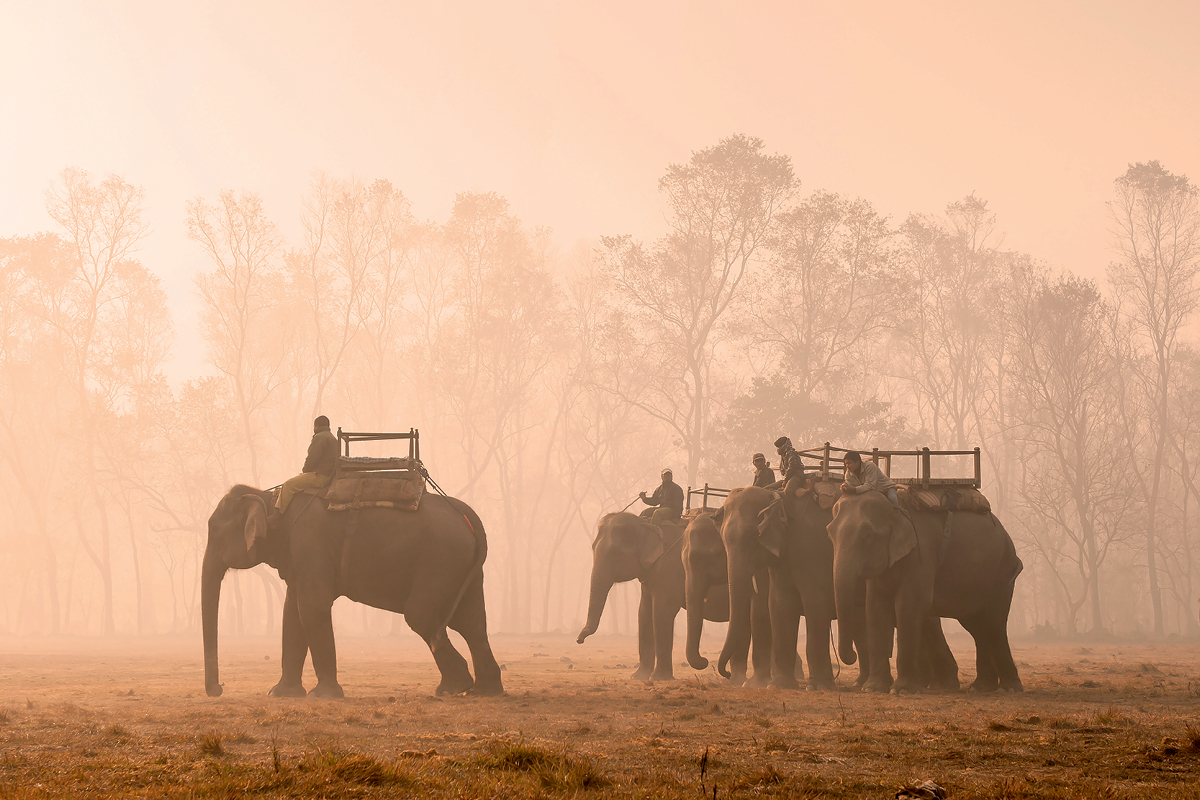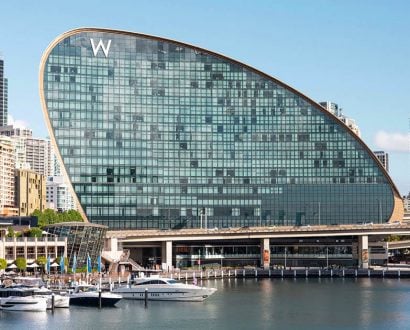The great one-horned rhino, a sneaky silhouette of some 2,000 kilograms, is furiously feasting among the long, razor-sharp blades of elephant grass. Territorial tigers have scratched the rhino apple tree trunks, a peacock prances under a silk cotton tree, and a crocodile lunges into the sultry Sala River, barely missing our crude canoe, which is being powered by two bamboo poles.
I’m on safari in Nepal’s Chitwan National Park, home to more than 150 of Nepal’s Bengal tigers, and the only country in the world apart from India in which you can spot the greater one-horned rhino in the wild.
The Churia Range, which separates Nepal from India, frames today’s story, one where a critically endangered rare hornbill soars overhead, spotted deer dance below, and monkeys frolic from tree to tree.
Think Nepal is all about the Everest? Think again.I am on a 10-day G Adventures tour of Nepal, in an attempt to discover the highlights of the Himalayas beyond the world’s tallest mountain.



My journey begins in colourful, chaotic and casually cool Kathmandu, wandering the trekking store district of Thamel. Here, the hikers, hippies and soft adventurers gather their bearings and swap tall tales and worn gear, at the beginning or end of a trek.
I tiptoe through the rickety streets, dodging potholes and pot sellers. Kathmandu still bears the savage scars of its 2015 earthquake, in which 9,000 people were killed and more than 600,000 buildings destroyed. I stumble amid the ruins and discover pockets of gorgeous green gardens where monks laze on lounge chairs and travellers sip cocktails and Everest Lager. It’s difficult to tell where the earthquake devastation ends and the Third World living conditions begin.
Local Support
SASANE was established 10 years ago with the assistance of G Adventures. It works to rescue women who have been trafficked into the sex trade or domestic labour, and trains those who have basic schooling to become paralegals to assist other women.
For those without schooling, it runs a Sisterhood of Survivors project, through which the women teach tourists how to make momos, serve them lunch, and promote the organisation’s story. To find out more or to donate to this program go to sasane.org.np
My tour takes me to the seventh-century, UNESCO heritage-listed city of Bhaktapur, past street vendors peddling fragrant spices, vibrant saris and pungent fish. At lunchtime, I dine on momos, traditional dumplings made by survivors of Nepal’s human trafficking trade, at SASANE, a social project supported by G Adventures. Late afternoon, and I am ambling in a hypnotic clockwise direction, spinning prayer wheels, at the beautiful Boudhanath Stupa, one of the largest Buddhist stupas in the world.
I sip on salty, fatty, yak butter tea at the home of some Lowa community members who are helping to preserve this Himalayan Indigenous society’s traditions through weaving. Later that night I sleep in a cosy bed at a Buddhist monastery, high on a hill overlooking the rice paddies of Kathmandu Valley, waking early to witness the monks at prayer.
My journey traces part of the course of the Trishuli River –which eventually meets with India’s Ganges – before I trek across a swaying suspension bridge to a remote lodge in Kurintar. The next day, I arrive at the flat and fertile Chitwan Valley. Chitwan, meaning ‘heart of the jungle’, is home to Chitwan National Park, built in 1973 to protect endangered wildlife.



In the 1950s, Nepalese, Indian and English diplomats hunted in this region, killing hundreds of Bengal tigers, leopards, rhino, sloth bears and wild elephants.
At that time, the area was home to 800 greater one-horned rhinos, known as the ‘unicorns of the jungle’. By the 1960s, there were fewer than 100 left.
It was declared a UNESCO World Heritage Site in 1984, with a core area measuring 932 square kilometres and the total area, including buffer zone, some 1,500 square kilometres.
Today, you’ll find 725 different species of birds, 49 types of reptiles including two kinds of crocodiles, 155 Bengal tigers, 150 leopards, 150 sloth bears, 550 rhinos, four different types of deer, plus bison and wild boar.
Barahi Jungle Lodge takes guests on canoe and jeep safaris along the Sala River and through immature river rainforest, which eventually gives way to the elephant grass in which the rhinos and tigers like to hide. Nepal, Sri Lanka and India are the only places in the world where you can see Bengal tigers in the wild. While there are no tigers on this day, with 14 rhinos and three crocs, I am far from disappointed.

On my final leg, the Annapurna Range plays hide-and-seek with Pokhara, Nepal’s third largest city. It is also home to one of the country’s largest Tibetan refugee camps, which trades in jewellery, trinkets and hope.
This ancient trade route between India, Tibet and Nepal was once part of the famed Silk Road but is better known today as a hikers’ hub as it is also the closest city to the Himalayas.
On my penultimate day, I take an early-morning journey to the foothills of Annapurna to view the sunrise over the hallowed Himalayas. It is truly a sight to behold.
But I have already experienced the peak of this trip: the greater one-horned rhino and the extraordinary Nepalese people.
The writer travelled on the Himalaya Highlights tour as a guest of G Adventures gadventures.com and Thai Airways thaiairways.com







